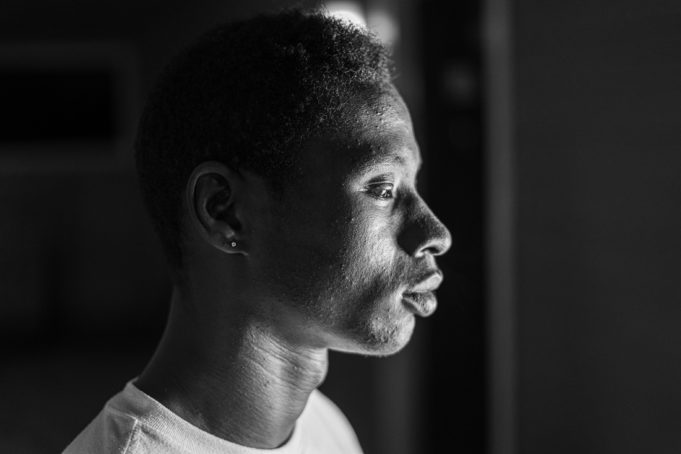Recently, while attending a housing meeting on the East Side, I overheard a conversation between two residents, one of whom appeared to be a minister. According to him, gang activity still existed, but it was subtle now, not so easy to recognize. Was this true? I wondered, and if so, why? With help from some locals, I met with two members of the Bloods, one older, one younger, both of whom consider themselves ex-gang members.
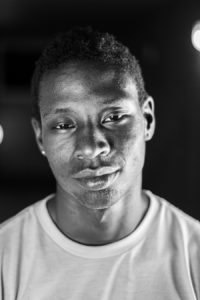
Gracious but cautious, they spoke about their gang years. Neither placed blamed on outsiders for the life he chose early on, and by “outsiders,” I mean wealthier Fort Worth residents. Instead, both spoke about the lack of a positive male figure in their youth, early-on violence within their family unit, who they hung with, and drugs — always drugs. Neither COVID-19 nor the more recent racial unrest was mentioned as causing the change in gang crime. Social media and online communication have replaced personal contact, perhaps providing an even more dangerous avenue for underground crime — one that is harder to track.
Cavile Place, a series of low-income housing apartments in Stop Six, has been home to KDawg, 43, his entire life. Growing up, he lived with his grandmother, graduated from Dunbar High School, and attended Tarleton State College, where he played baseball for a short time. After this, life took a turn.
“These streets will eat you up,” he said, “turn good kids from worse to worst.”
KDawg is a founder of the Truman Street Bloods, a gang that formed on the East Side in the late 1980s. “We was organized in my day, about the time crack cocaine hit the area. We did things old school, face-to-face back then. … I’m not really an active member now, but I still carry rank with the young guys. They come to me for advice on what to do — should they retaliate against another gang member, or do this or that. I’m still the only OG [or ‘original gangster’] whose hair hasn’t turned gray.”
KDawg has been to prison three times, most recently in 2010.
“A cop pulled me over right here in Stop Six,” he said. “I was pushing heroin back then, and he knew I had a stashbox filled with cash in the car, but he couldn’t find it. He got mad, got me out of the car, and forced my face into the hood. It was summertime, and that hood was hot. Then I got mad and turned and started beating him. He hit his panic button, and then all hell broke loose with cop cars surrounding us. That’s when they spotted my gun in the car, and then they found the trapdoor where the cash was hid.”
A district attorney wanted to give KDawg 45 years for aggravated assault against a police officer, but his grandmother hired a Dallas lawyer who was successful in lowering the time to 10 years. Two were spent in Tarrant County Jail and the rest in the Ferguson unit in Midway, a maximum-security facility.
“Prison was hell,” KDawg recalled. “It’s all red brick, and gray clouds. I was in seg [or ‘segregated’] for two years. You go in one way. You come out another. My heart turned to stone a long time ago.”
Upon his release from prison, KDawg returned to his grandmother, the one stable adult in his life, but she died shortly after his homecoming.
“I was shot this past New Year’s Eve over by the park on Liberty Street,” he said. “A group of us was standing around, drinking and having fun. I didn’t even know I was shot until I looked down. The bullet went in and out. One of the guys took me to [John Peter Smith Hospital], but the cop on duty came in and kept asking me about my gang activity. I just got up and walked out. Still don’t know who put the bullet in me.”
I asked KDawg if anyone called the police when he was shot.
“No, it’s a gang rule. You don’t call the police on nobody. They come and park their patrol cars here in Stop Six. It’s crazy. I’ve lived in Cavile all my life, and they still pull up beside me and ask me what I’m doing here.”
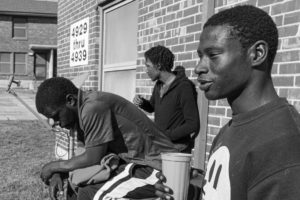
KDawg tells of one police officer he will never forget, one who retired a few years ago.
“He respected us,” KDawg said. “We was more than just gang members. Brought the kids food. If he caught us with drugs, he would order us to throw it on the ground and crush it, but he would not take us in. His only request was: ‘Don’t ever run from me.’ ”
Today, KDawg said, the Bloods deal in black tar, heroin that is not cut, not diluted. KDawg said that if he is going to sell it, it is going to be the good stuff. The problem is that users may not realize that it is uncut, and they take too much and die of overdose.
Zay, 23, another Eastside Blood, also grew up in Stop Six. He joined the Bloods at 15, considering it a rite of passage, a way to be respected. His older brother encouraged him, telling him he would let him in, but first he had to prove himself. After driving around town, they ended up at Hulen Mall, where Zay’s brother handed him a 45 Glock, telling him to snatch a woman’s purse in the mall parking lot. Zay spotted his victim and attempted to grab her bag, but the woman fought him. He pointed his gun at her and pulled the trigger, not realizing that his brother had intentionally removed the clip. The police never caught him for the attempted robbery.
“I was young and dumb, and I felt guilty after that and so lucky I didn’t shoot her,” Zay said. “My life would have ended there if that clip had been in. I knew by the time I was 17 or 18 that I didn’t want to live like that. Getting in a gang is easy, but getting out is hard.”
Zay has seven siblings. The youngest is his 9-year-old sister.
“I have to watch out for them and take care of my mama,” he said. “I got arrested for assaulting the daddy of my mama’s two youngest kids. He was beating her. He didn’t like me. He thought I was the black sheep of the family. While I was in Tarrant County Jail, [Child Protective Services] took the two kids for a time.”
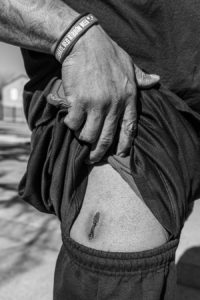
“I fell, and then noticed I couldn’t get up,” he recalled. “Someone took me to the hospital. They said I would be in there for a month, but I started walking before long. I left after about 10 days. No one reported it to the cops. My mama and me and her two youngest lived in our car at my grandmother’s over by [East] Berry [Street] and Clotell [Drive] for a while. She let us park on her property but wouldn’t let us come in. I have forgiven her for that, but I can’t forget how hard it was.”
Zay’s younger brother, 18, wants to be a Blood. He sees it as family, as a group who will protect him, perhaps love him.
“I know now that you don’t have to in a gang to be loved,” Zay said. “I try to tell him that.”
Both KDawg and Zay have recently moved from Stop Six. Zay is working part-time now but searching for a more stable position. With a federal grant, plans are to demolish Cavile Place and over the next several years revitalize the entire Stop Six area — including erecting new housing and recreational facilities and landscaping a common green space. It remains unclear whether KDawg and Zay will return to the home they have known so long.
*****
“Everybody wants to be part of something,” said Charles Rogers, 46, one of four officers in Fort Worth police’s Gang Intervention Prevention unit.
Today, communicating is conducted via social media — Instagram, Snapchat, and Facebook, and many times underground sites like Backpage.
“Gang activity tends to ebb and peak,” he said. “Right now, it’s down. It’s difficult to always know the reason why. Part of it may be due to the virus. You no longer see gang members standing on the street corner wearing their bandannas, making the B or C letter with their hands. And you no longer see them hanging out at mom and pop stores flying their colors.
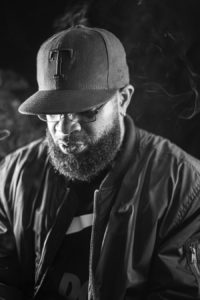
“Gangs are mostly comprised of men,” he said. “Women can be members, too, but it is typically because of a man they hang with. The old guys have mostly lost their beef with each other, but the younger guys still spark animosity among the various groups.”
The Bloods occupy Stop Six while Como and Polytechnic Heights are Crip territory. It is difficult to determine exact numbers, but Rogers said the Crips outnumber the Bloods. The North Side and South Side are home to several Hispanic gangs, including Sur 13.
Rogers also grew up in Stop Six with a mother who encouraged him to move on to better opportunities. After graduating from Eastern Hills High School, he attended college in Kansas. He began his career with the Fort Worth police 13 years ago in the gang enforcement unit working the streets for five years, identifying gang activity, issuing warrants, and adding names to the gang unit file. Now, in the intervention unit, he visits schools and speaks of consequences, his talks aimed at kids who are at-risk and on the verge of entering a gang.
Pointing to his cell phone, Rogers said, “Everyone has one of these, even kids as young as third and fourth grade. If they can locate WiFi, they can find just about anything they want. I see elementary kids using weed they have found online.”
Rogers also conducts seminars in criminal justice classes at TCU and UTA, educating counselors and teachers on the definition of a gang and how to recognize gang behavior.
“A gang is three or more persons with a common identifying sign or symbol or an identifiable leadership which regularly associates in the commission of criminal activities,” Rogers said.
Once someone is stamped a gang member, any crime he may commit receives a harsher penalty than it would otherwise.
“Kids mimic what they see,” he said. “It’s generational. The grandfather was a gang member, the father joined, and now the grandson follows. Kids do what is expected of them.”
Rogers is typically the first one to arrive at his office (he was not comfortable sharing the location), where he starts his day by reading his Bible. Then he determines where he is most needed, at a school that has requested his presence, or perhaps being proactive, he seeks a venue where he believes he can make a difference. Rogers is part of Gang Resistance Education and Training. GREAT decides the topic, and students are encouraged to express themselves on emotions, communications, how to give and receive respect, and how to respond to conflict.
When asked to describe the best day he remembers, Rogers recalls a little boy in fourth grade coming up to him after he spoke to the class.
“He told me I had made a difference and he would remember what I said, that he wanted to do better,” Rogers said. “Prevention is the key. You plant a tree today so someone else can benefit from the shade tomorrow.”



